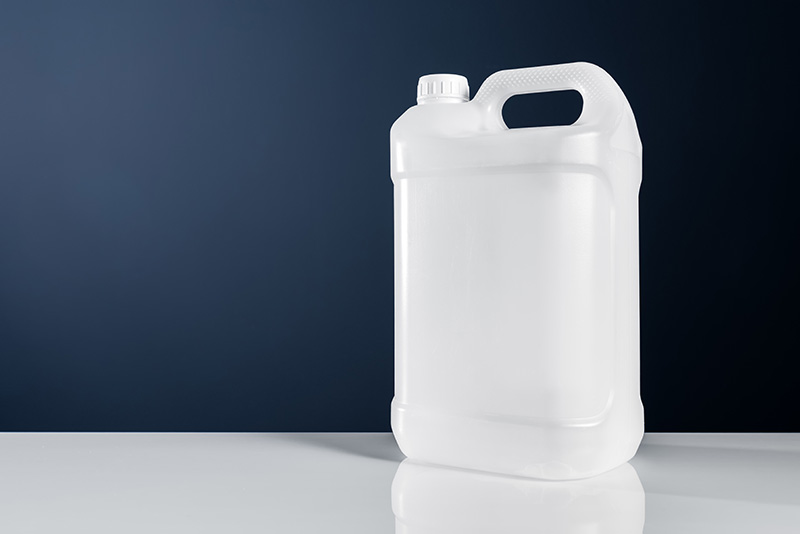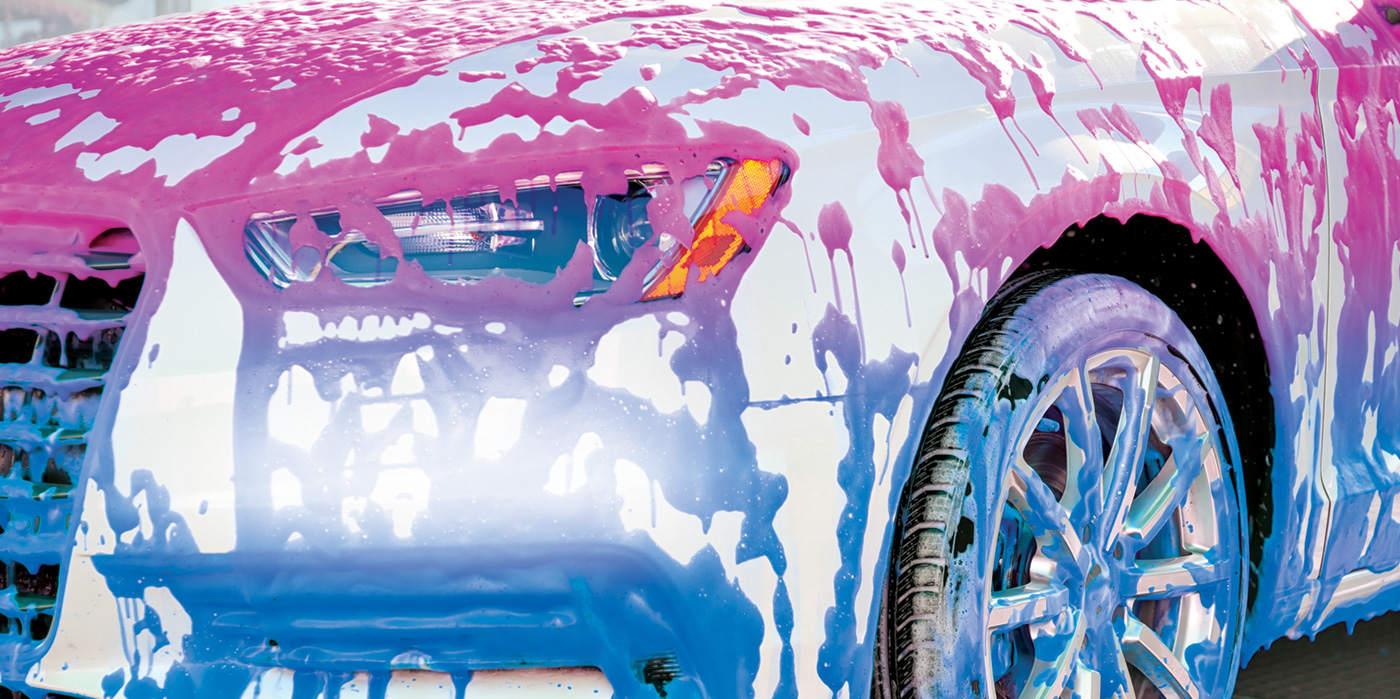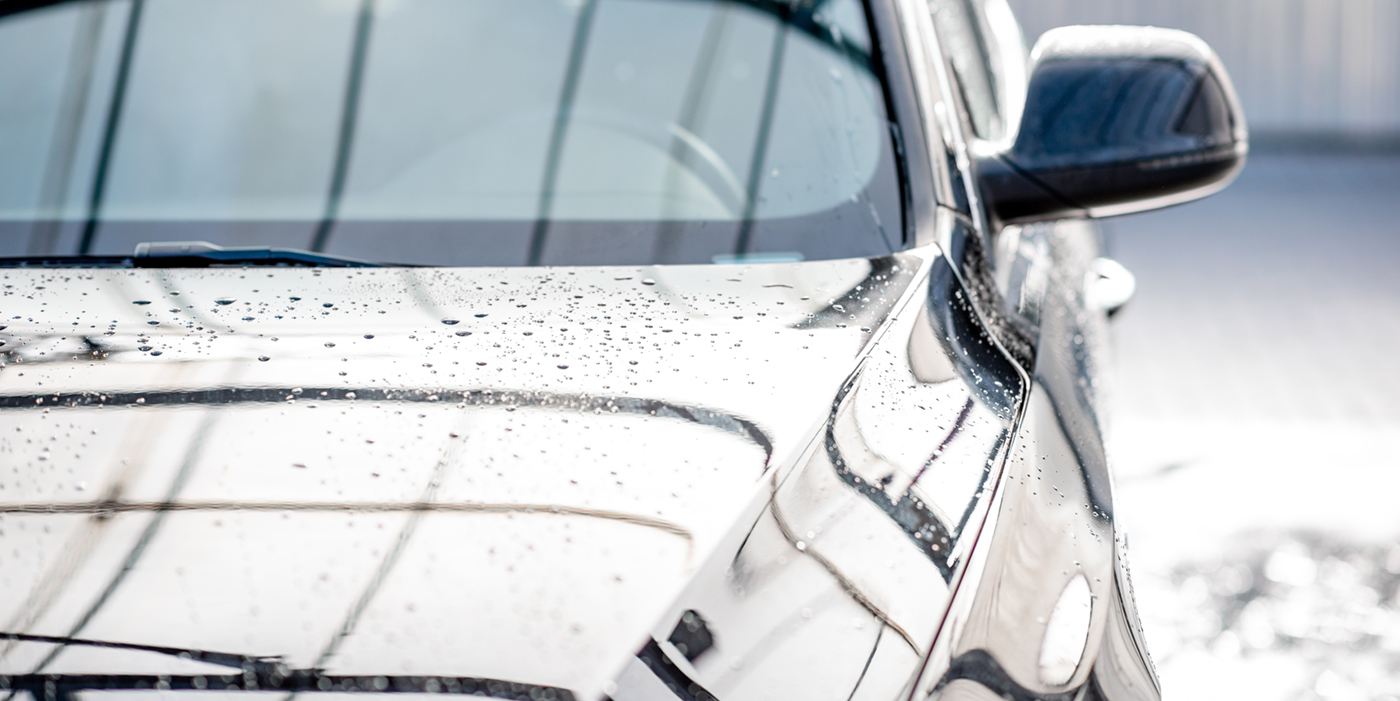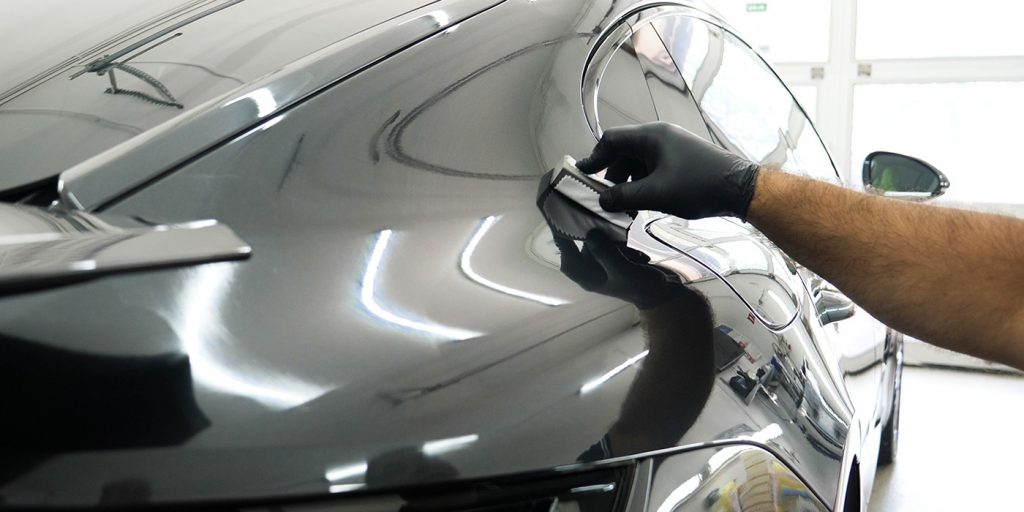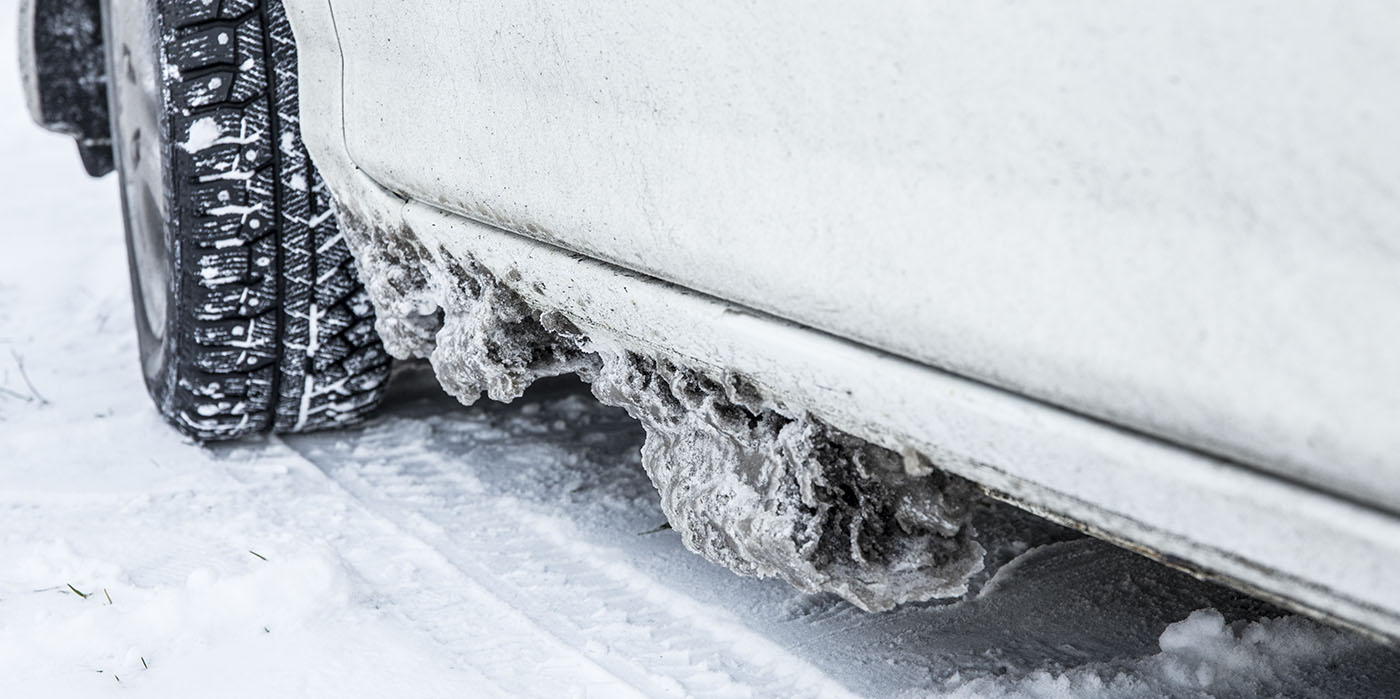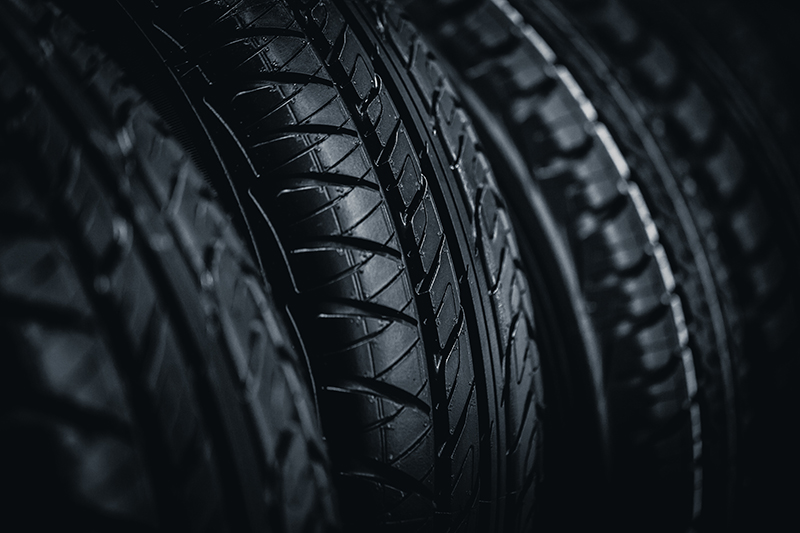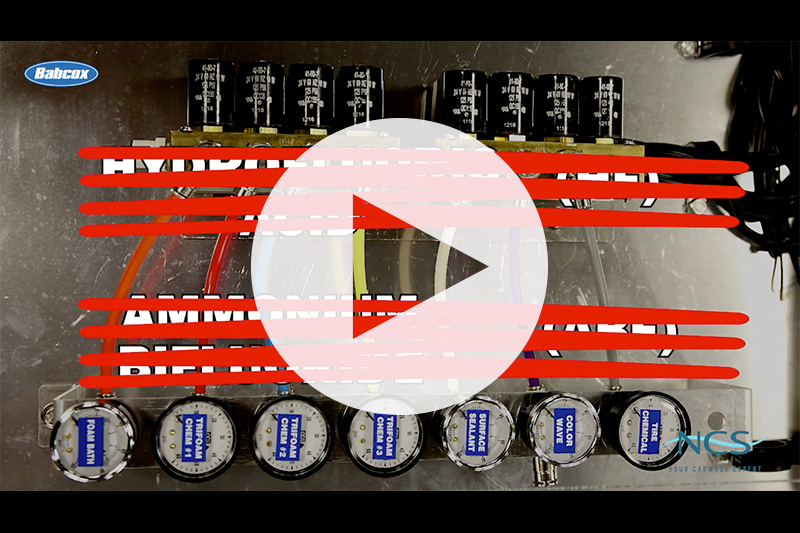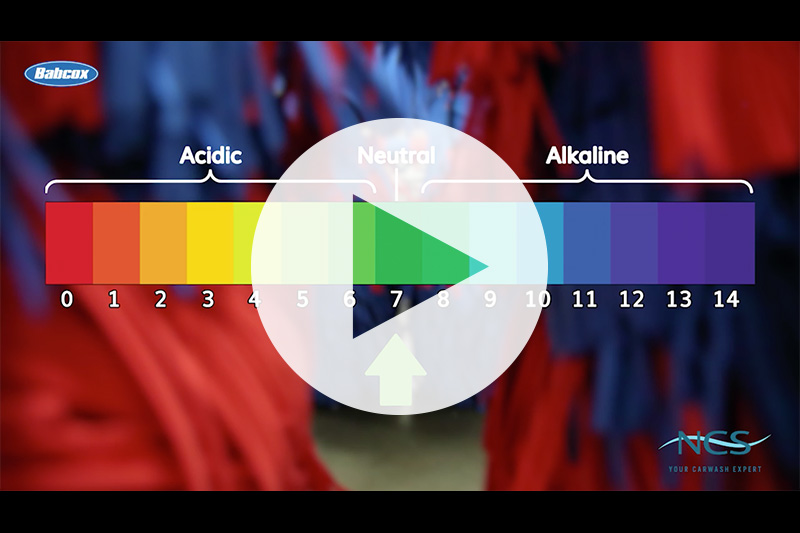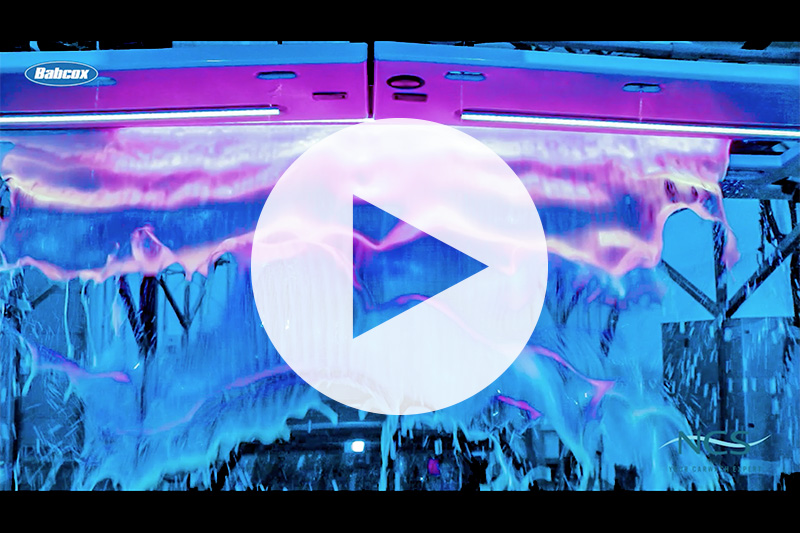Technical innovation has changed how automated carwashes clean vehicles in many ways over the past few decades. Technology upgrades have increased wash speeds while boosting final results. Improved equipment now operates more efficiently and requires less on-site labor. Updated chemical formulations now clean better and rinse cleaner.
But not all operational improvements are of a highly technical or scientific nature. When the formulas of many common carwash chemistry products were improved upon, one of the most beneficial changes was the manufacturers’ movement to higher concentrations. Chemical companies looked at the issue of concentration in an attempt to address a number of known issues with carwash chemistry.
Today, many manufacturers tout high concentrations as a way to create efficiencies when it comes to shipping costs, chemical application, proper storage, etc. Even so, how does chemical concentration affect daily operation and benefit modern carwash customers? We contacted some chemical experts to find out why savvy wash owners should spend time researching and considering every chemical’s concentration.
Concentration benefits
Savings as a general term is applicable to the many advantages of choosing concentrated chemicals. The immediate benefit for operators who choose concentration is a huge savings in freight costs, according to Sean McBride, director of key accounts with Cleaning Systems Inc. Simply put, shipping tractor trailers of 55-gallon drums across the country was becoming increasingly expensive. Sometimes operators — and even distributors — were making decisions on what chemistry to use and sell based largely on freight expenses. Today, higher concentration options allow smaller, more fuel-efficient vehicles to deliver chemistry.
Inside carwash facilities and warehouses, space savings are another advantage that concentrated chemicals offer. Companies are able to stock more on a distributor level, and the updated chemistry requires less backroom storage space of carwashes, McBride notes. Finally, when the world of “hyper concentrates” evolved, operators started to see further savings on cost per vehicle while working to see how far out they could get dilutions. In some cases, the concentration ratios reached 1,500:1 or higher.
The chemical dilution change is one of the biggest recent industry innovations, reveals Matt Brandt, an industrial products sales manager with DEMA Engineering Co. Operators and manufacturers are looking to ship less and less water weight with chemicals. This consideration has led to a “lean out” when it comes to chemical dilution ratios. These ultra-lean chemicals and hyper concentrates have proven to be a huge shift for carwash owners.
Dilution best practices
For carwashes making the concentrated conversion, McBride suggests that operators first verify the chemical’s recommended usage and dilution. Also, tubing, fittings, etc., should be verified to ensure that they are compatible with the new product. Concentrated products are obviously stronger, so every carwash owner would be best served in exercising extra caution. Thus, consider picking the chemical vendor with the safest method to store and transport the ultra concentrates.
“If someone is being asked to empty chemicals into a larger holding tank, make sure the system is vetted and easy to use for your employees to avoid spills, etc.,” McBride continues. “Whether concentrated or not, safety glasses, gloves and other equipment should always be used.”
Once a chemistry swap is complete, a carwash needs to use the product over time to determine if the change was effective. Brandt states that operators cannot switch products every day to see if a better look can be achieved. Instead, a business should clean vehicles with the new option for a set time on a trial basis to see how it performs with on-site equipment.
These performance tests should be adequately monitored as well. An operator should observe how new chemicals interact with the rest of a carwash’s system, Brandt notes. Monitoring every component the new chemistry touches is important. Realizing how a chemistry upgrade might affect the tunnel or bay’s overall show is important too.
“Chemicals are made up of different ingredients, and you might need to adjust something in your wash to get the performance you want,” McBride says. “Changing chemistry is not a quick change, but you have to try it out and see what works.”
Operators also must follow through on analyzing cost per vehicle or wash package, according to Kurtis Price, chemical department manager with AUTEC Inc. During this analysis, it is important for owners or managers to test on multiple vehicles of varying sizes. As the testing proceeds, he or she should adjust equipment, chemical dilutions as well as pressures to ensure all vehicles are cleaned thoroughly. Remember to work with the equipment distributor as well during this process to confirm that a wash remains within the recommended tolerances and the parameters for optimal operation.
Promoting upgrades
Once chemistry-driven services have been updated and perfected, it’s time for the operator to promote any and all new options. Brandt notes that signs in the carwash are hugely important. Customers who are moving through a wash will generally have time to read signs and then recognize what is happening in the tunnel.
Customers read the information that carwash owners present to them, and in this instance, knowledge is power. If customers can tie back that clean vehicle shine to the chemistry applications that a carwash provided, they will keep coming back. This is why informing customers about the newest technologies and chemistry options is always helpful, Brandt states.
In addition to promoting via on-site menus and signage, Price advises carwash owners and managers to make upgrade announcements on social media sites and websites. Operators can also place notifications or advertisements in local and regional print media outlets. Emails can be sent to a customer base that include introductory discounts on upgraded options. This allows existing and new customers a same-cost opportunity to try out any new offerings.
McBride also points to bigger, more prominent menus that feature clear, large communication of new chemical features. A new technology option for promotion is smartphone icons that are commonly called on to easily communicate the vast number of features in existing wash packages. That said, an operator cannot forget the promotional value of the wash experience itself.
“If a customer doesn’t see a light or service confirmation sign, they often think they didn’t get the service even though the product did come on,” McBride confirms. “Don’t be frugal on the soap application as well; the consumer has paid a premium for the premium.”
Finally, an operator should not be scared to ask questions at the end of a wash cycle. Does the customer think he or she received the services that were paid for? If not, ask why and make adjustments based on the feedback. “The customer is always — well at least usually — right,” McBride says.
Modern IBA chemistry
Trends in the in-bay automatic (IBA) world also include the concept of savings — here via non-dyed products, Price notes. More and more locations are calling on non-dyed products in their IBAs, but these colorless chemicals are used along with various lights to provide the extravagant show customers now expect. Non-dyed chemistry is helpful to chemistry manufacturers and carwash operators in many ways.
Price’s list of advantages includes:
- Driving chemical costs down, since dye is expensive
- Allowing changing in-bay chemistry colors with a simple programming of light packages
- Removing the need to stock multiple dyed chemicals
- Benefiting wash water quality for sites that utilize water reclamation, since reducing the dye in the reclaim process generates cleaner and clearer water.
IBAs have typically been limited in their expanded menu offerings because of programming limitations or sheer time. Even so, carnauba wax shows have even become more popular, and sometimes they are fairly easy to adapt, McBride explains. As a whole, savvy IBA operators who know their limits are looking at a better strategy on their menus to create a better offering, competing with the bigger box tunnel wash.
“They are giving a little more in the middle package possibly — or maybe simplifying the selection from four to three packages, making the middle and top [packages] more desirable for the consumer to select,” McBride says. “This is upping the ticket average for the operator but giving the customer a little more. It is often a win-win strategy.”
Learning more
At the end of the day, carwashing is becoming more and more competitive, and leading chemical manufacturers are investing heavily in design and technology to provide operators extra advantages, according to McBride. This is an important part of keeping the carwashes these companies serve one step ahead of the competition. Consumers also are getting smarter and better at recognizing the value some washes offer that others do not.
Making a carwash stand out can be as simple as the different scents and colors or the lasting shine after a wash. If an operator wants to stand out from the competition, he or she should be researching and thinking about what services will make a wash unique, McBride says.
In the crowded wash market, knowledge has proven to be power, Brandt concludes. Attending an industry trade show is one of the easiest ways for any operator to learn what is new in carwash chemistry. Even regional shows will prove to be worth the investment of time and money, because so many of the carwash chemical companies attend these shows.
Jonathan Abrams is a freelance contributor.

